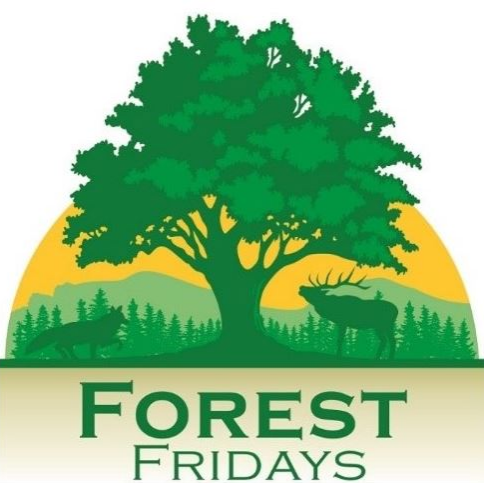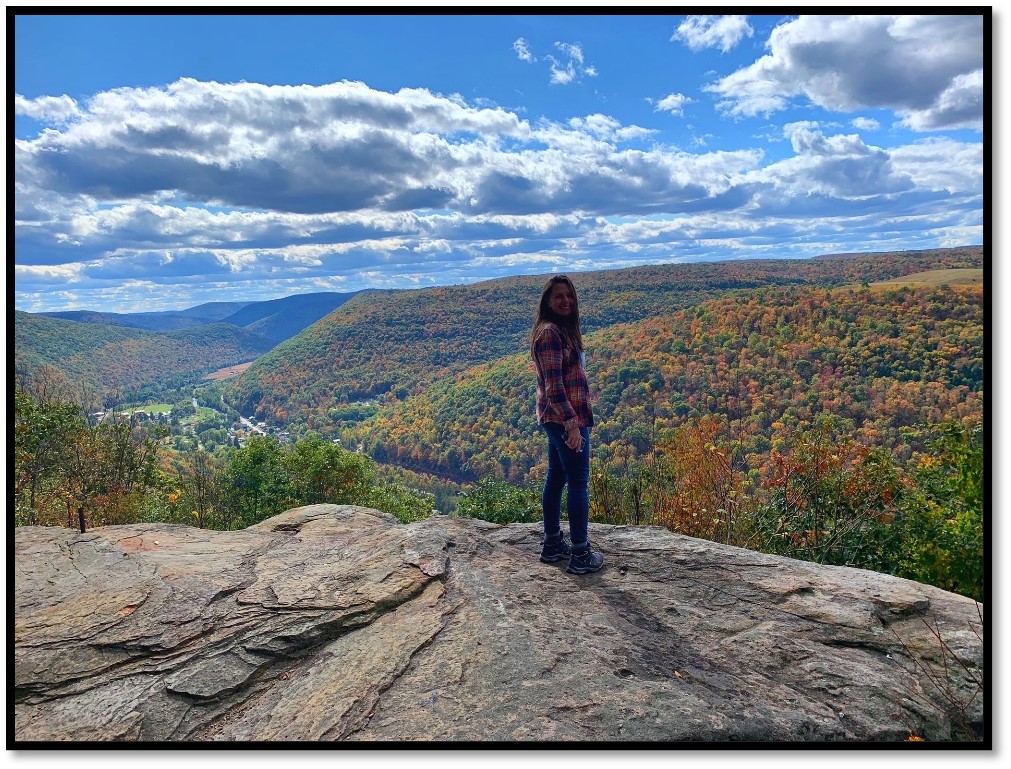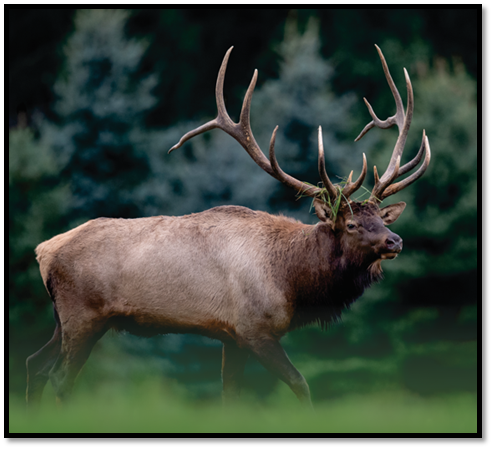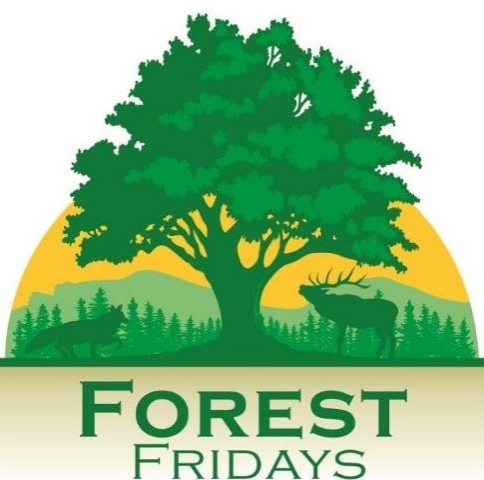
by Ryan Reed
When you manage 2.2 million acres of land, there’s sure to be some interesting things about them. Let’s dive in! At least seven of the 20 state forest names originate with native Americans (Cornplanter, Bald Eagle, Susquehannock, Tioga, Tiadaghton, Tuscarora, Moshannon).

Kirstin Dorshimer, of the bureau’s Minerals Division, stands on Band Rock Vista.
There’s an abandoned coal mining town in the McIntyre Wild Area (Loyalsock State Forest) with a vista called “Band Rock”. As the story goes, local bands would entertain the miners while atop the rock that basically functioned as a stage.
The Kaiser Aluminum and Chemical Company quarried minerals out of what would later become the James C. Nelson Wild Area (Tuscarora State Forest) to make refractory brick back in the mid-1900s.
The Quehanna Wild Area (Elk and Moshannon State Forest districts) was formerly leased to the Curtiss Wright Corporation for jet engine and nuclear research in 1955. Vestiges of infrastructure from the occupation remain.
Sproul State Forest, at over 300,000 acres, comprises about 14 percent of all state forest land. Adding in second place Susquehannock State Forest (265,000 acres) increases that to about 25 percent of all state forest land.
At least two state forests, (Michaux and William Penn) boast areas with unique soils and geology, giving rise to minerals like meta rhyolite and serpentinite, respectively.
One state forest, Buchanan, is named after the only president to come from Pennsylvania – James Buchanan, 15th President of the United States.
Speaking of Buchanan State Forest, its Pine Ridge Natural Area is part of an area called “Resettlement Lands” that were marginally productive farms purchased by the federal government during the Great Depression to encourage families to “resettle” on more productive farmland. Evidence of these old homesteads can still be found there.
Bald Eagle State Forest administers an area called Hairy John’s Picnic Area. “Hairy” John Voneida was said to have lived as a hermit at the site for many years after being rejected for military service and accused of the murder of his wife. John was reputed to not shave or cut his hair, hence the nickname.
The Stillwaters Natural Area (Delaware State Forest) provided a sanctuary for Union Army deserters and young men evading conscription during the Civil War. They built shacks in the dense undergrowth on the islands of several swamps found within the natural area.
The first purchase of land comprising Elk State Forest was in 1900. At the time, wild elk had not existed there for at least 30 years due to exploitation. Elk, some of which came from Yellowstone, were reintroduced in the region in 1913. After decades of ups and downs and subsequent reintroductions, the herd began to increase and is now estimated at over 1,400 animals in northcentral PA.
These are but a few of the odd facts and stories about our state forests, leaving many more for future installments.





